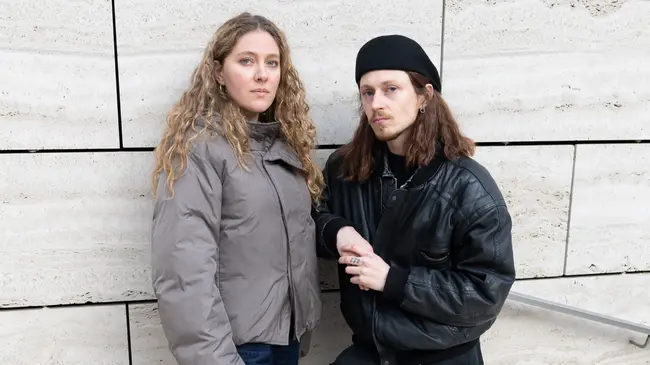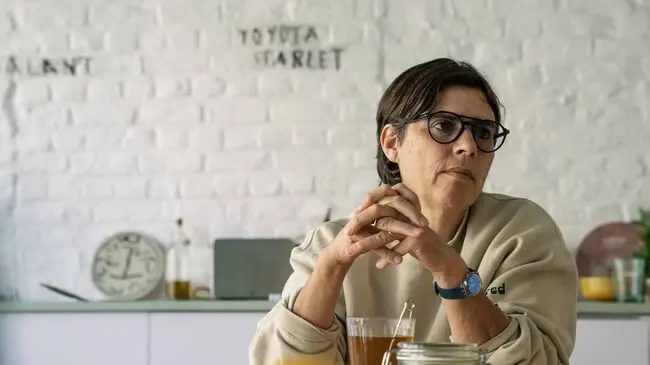On a quest to contain the uncontainable

In the midst of the first summer heatwave, we gathered in the city of Leuven to visit M Leuven’s latest solo exhibition featuring a new body of work by Guatemalan artist Naufus Ramírez-Figueroa. The exhibition weaves together elements from literature, folklore, magic and childhood memory to create a lucid dreamscape for the viewer to enter and navigate. Conceptually, the artist’s work is rooted in experimental theatre, traversing multiple mediums including performance, film, sculpture, painting, and installation. Together with Gabriela González Rondón, a multi-media Venezuelan artist based in Brussels, we unpack the conceptual and historically-layered narratives present in the exhibition, from the literal and philosophical to the figurative and metaphorical.
Could you tell us about your practice?
At the moment I’m co-running KRAAK, an experimental music organisation that’s existed for over 25 years and which has been extremely formative in my life. My art practice is very sporadic: experimental and outsider music and art have always been inspiring to me, and I’m always bouncing from medium to medium. I mostly work with video, as I find that it’s a singular medium where all elements can come together. Everything can be a part of video and video can be a part of everything, and video work offers me the freedom to simultaneously integrate music, sculptures and drawings, creating immersive and otherworldly environments to escape to. Symbols and mythology, personal and universal, are also very important. I’m particularly interested in outsider ideas and fringe explorations: dreamscapes, liminal spaces, and the areas where reality can become something else.
Experimental and outsider music and art have always been inspiring to me
Which of the works stood out to you the most in this exhibition?
For me, House at Kawinal is a work that exemplified Ramírez-Figueroa’s practice the most for me. The space he created for displaying memory using various symbols is a narrative on its own. The items we see are typical of Guatemalan daily sites, but there are also bodies and esoteric elements and signs that are very ominous yet blend in with the rest. It feels like walking into someone’s memory or dreamscape.
The work also has this Pompeii-esque dimension because it refers to a real and important archaeological site in Chixoy Vallery in Guatemala of which the ruins only surface during the dry summer months. It’s very powerful to address how ruins are covered and uncovered by natural processes. I think this work stood out to me because of how it layers politics, ecology, and symbolism. It’s not an easy task for a work to be multi-dimensional, but he pulls it off.
It’s not an easy task for a work to be multi-dimensional, but he pulls it off
There are a lot of elements at play in Ramírez-Figueroa’s work. Dark themes and narratives of violence are often interpreted in a dreamy way, infusing the imagination and fantasy, but also dark humour sometimes. What is your perspective on using play to unpack trauma?
As Latinos and people who have experienced trauma in many different ways, we have a tendency to seek humour in everything and to make light of heavy issues; reality would be unbearable otherwise. Historically we’re the backyard of the US, bearing the effects of political and military interventions, and left to deal with the aftermath.
I find humour and play are elements that help us navigate these traumas. In a way, humour is escapism. If you are defenceless and alone, humour is good company. Humour and play are also tools of resistance. They are at once a shield and a weapon, and far more effective than using speeches and invectives.
If you are defenceless and alone, humour is a good company
In terms of curation, I noticed the three video works at the end of the exhibition have the combined theme of repetition. The process of time seems very evident here. You can skip from one video to another and go back and the act is still happening, whether it is the hollowing-out of watermelons or painting the figure in blue. How did you view these works in dialogue with one another?
Yes, the narrative seems to be linear. As a viewer, I found it hard to stay in one video and found myself alternating between the three works. As a whole, they make sense. Abstraccion Azul shows the marking of a person into a non-entity. The work stands for a family member that was murdered during the civil war and through marking; he is acknowledging this tragedy but also marking the absence. In a way, he is maintaining that link with the departed. Then you have the Three Ghosts and Illusion of Matter, which also carry a sort of repetitive action that turns towards playful destruction, both metaphorically and physically, as in the case of the latter.
The first video work, Cacaxte #1 carries sentiments of colonization and re-ignites the debate surrounding the right to artefacts. What is your perspective on this work being shown at M Leuven?
Dealing with colonialism is always tricky. Cacaxte #1 showcases a kind of a backpack made of a metal support structure, to which small sculptures are attached. These objects are from different time periods and cultures. You have objects from the Mayans, but also from Greece, China and Guatemala and other places. All those cultural expressions being ‘back-packed’ signals to the worldwide problem of colonisation and how artefacts disappear from countries of origin, only to be exhibited in foreign museums elsewhere.
This is a very delicate and symbolic work, but I struggle with interpreting it. On the one hand, you have all these symbols of lost cultures that are now being carried within this very European and very white land that has not yet fully acknowledged its hand in oppression. On the other hand, I wonder about the commodification of resistance. What is the true power of resistance in an institution that, at the end of the day, can choose whether to accept or reject you? To make this work as part of his residency at M Leuven in 2018 is definitely an act of resistance, but also showing it in the museum in dialogue with art history is also somewhat assimilation. But perhaps that’s how museums can deal with the country’s legacies of colonialism themselves: by inviting more artists and creating site-works that are indeed filled with tension.
Did any of the works in the exhibition relate to themes or questions you are interested in pursuing?
The idea of displacement and being in-between places is a very strong theme in Ramírez-Figueroa, and it’s also a recurring question in my practice. For me, it manifests in escapism, inventing other worlds and alternative mythologies where I can dream of potentially returning home, whatever and wherever that is.
Aesthetically, his series of installations ‘Deus Ex Machina’, ‘Dea Ex Machina’, and ‘Chiperrec’, were very compelling to me. These works deal with myth and narrative from Greek theatre, and through various elements in the installation they highlight divine intervention. I love the combination of elements that invoke Guatemalan folklore, such as masks that refer to the saints and gods. I often use different totemic elements in my work, so I found this series of hanging installations to be particularly interesting to me aesthetically and in terms of narrative.
What do you think is the role of myth in the processing of trauma?
With myth, it’s all about the representation of themes and things that go beyond our humanity. Myths can be anchors to self-preservation or cosmic connections beyond you and yourself, which helps you contain the uncontainable. Being at one with something larger than yourself is necessary sometimes because life is violent and random and you don’t know when you’re going to be torn out of your comfort zone. The potential is there for all of us to suffer and suffering is part of our experience.
At the same time, you can take the elements of myth out of a narrative structure and they can be more universal and totemic. This is what I like about invented mythology. How you can take universal signs and symbols and subvert them to make space for something new to exist. It doesn’t necessarily have to be tied to narrative or structure. Things can be comforting in abstraction too.
Different Class works with the interest of their community at heart.
Our work’s purpose is to foster a solid network for independent artists, those who love them, and those who want to support them. Become a member to contribute to the local Belgian art scene.





